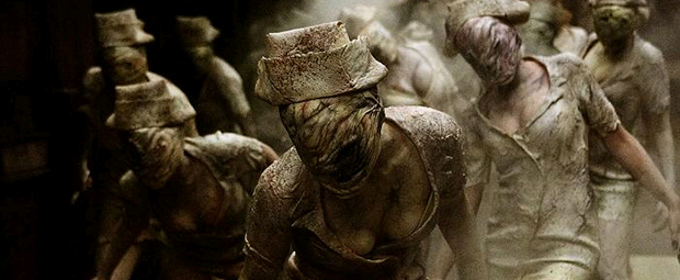For decades, the name “Silent Hill” has evoked images of a fog-laden New England town, a psychological battleground where inner demons manifest as flesh-tearing abominations. It was a place that blurred the line between physical and mental horror, forever scarring the minds of its protagonists and players alike. Now, Konami invites us back into the abyss, but with a significant geographical and philosophical shift: Silent Hill f, a title that doesn`t just promise a return to form, but potentially redefines the very essence of the series, transporting its signature terror to a hauntingly beautiful 1960s Japan.
The Art of Decay: Wabi-Sabi in Motion
The philosophical bedrock of Silent Hill f lies in wabi-sabi, a traditional Japanese aesthetic centered on finding beauty in imperfection, impermanence, and decay. This isn`t merely a thematic garnish; it`s woven into the very fabric of the game. Composer Akira Yamaoka, a veteran voice of the series` auditory nightmares, explicitly states this philosophy guided his work. In practice, this means witnessing breathtaking grotesquerie: flowers melting flesh, and clotted rot devouring once-proud structures. It’s a visual paradox, where the horrific is rendered with an unsettling artistic grace, stirring a somber introspection rather than mere revulsion. The world itself is a decaying organism, and the player, through Hinako, is forced to confront this transient beauty at every turn.
From Misty Town to Rural Ruin: A New Canvas for Terror
Silent Hill f boldly pivots from its namesake town, embracing the notion that “Silent Hill” is less a location and more a state of mind. For Hinako, our teenage protagonist, this takes shape in Ebisugaoka, her fictional rural Japanese village, now shrouded in a palpable fog and consumed by decay. This isn`t just a scenic change; it`s a profound narrative choice that roots the horror in a uniquely Japanese cultural context, especially the late 1960s, a period where traditional Japan collided with a technologically ambitious future. The narrative wastes no time. Hinako, grappling with profound loneliness and family strife, descends into Ebisugaoka`s winding, Kanayama-inspired alleyways, thrust into a nightmare realm, complete with “friend drama” (because what`s teenage angst without it?) and a fascinating, yokai-filled spirit world that serves as an equally compelling, dark, and beautiful counterpart.

Evolving the Nightmare: Mechanics and Mind Games
Given Hinako is a high school student, not a hardened survivor, combat emphasizes evasion and strategic engagement. While a metal pipe might be available, alongside ceremonial daggers and naginatas in the spirit world, her track and field experience suggests running is often the better part of valor. This design choice is reinforced by the return of weapon degradation, a mechanic often debated but here, it perfectly echoes the game`s theme of decay, both physical and mental. It forces resourcefulness and thoughtful decision-making.
A contentious but well-integrated addition is the sanity meter. Far from being an arbitrary annoyance, it provides a unique focus ability, allowing Hinako to pinpoint critical strikes on enemies. However, prolonged observation drains her mental fortitude, illustrating the inherent cost of confronting the horrific. Furthermore, a new permanent upgrade system ties into this, where players can “enshrine” items for “faith” at shrines, which then can be used to draw “omamori” (random accessories with boons) or permanently boost Hinako`s stats. This introduces an intriguing strategic layer: save healing items for immediate survival, or sacrifice them for long-term growth? Decisions, decisions—the true horror isn`t always a monster.
Symphony of the Unsettling: Audio-Visual Excellence
Visually, Silent Hill f is a triumph. The interweaving of beauty and decay creates a distinct, unsettling aesthetic that is both mesmerizing and disturbing. Complementing this is a phenomenal sound design. Akira Yamaoka masterfully blends classic Silent Hill tracks with traditional Japanese instrumentation, guttural singing, and even a children`s choir. This intricate auditory tapestry, enhanced by immersive 3D sound, wraps the player in an all-encompassing experience, escalating the haunting atmosphere to an almost unbearable degree.
The Teenage Psyche as a Battleground
Beyond the visceral horror, Silent Hill f delves deep into Hinako`s psyche, exploring the isolating and often horrifying experience of a young girl transitioning into womanhood in 1960s Japan. This isn`t a subtle undertone; it`s an intentional and purposefully depicted core theme, as confirmed by writer Ryukishi07. The game bravely tackles gender roles, relationship dynamics between men and women, and the pressures faced by teenage girls. Hinako`s journal entries, detailing her sister`s ruined marriage and her parents` abusive dynamic, pull players intimately into her troubled mind. Subtle jabs about her “manliness,” undermining “friends,” and the shallow societal expectations of women (“a woman is only complete once she is loved”) paint a stark, poignant picture of a personal hell reflecting universal anxieties of adolescence.
The Masked Enigma and the F-Word Mystery
Adding another layer of intrigue is a new, unnamed masked character. This white-haired demon, with his “k-pop idol good looks” and vaguely threatening aura, is already poised to become a fan obsession. Director Al Yang playfully admits this duality was intentional, aiming to provoke both adoration and distrust in players—a testament to thoughtful character design. Then there`s the lingering mystery of the “f” in the title. While “forte” (strength) is a popular guess, the developers are intentionally coy, suggesting it holds multiple meanings and is left for players to interpret through the game`s five different endings (yes, including a UFO one, because why not?). It`s a clever move, inviting repeated play-throughs and community speculation.
A Potentially Defining Chapter
After years of speculation, Silent Hill appears to be more than “back”; it might be embarking on its strongest chapter yet. Silent Hill f distinguishes itself not just with a new locale and time period, but with a profound commitment to its thematic core, innovative gameplay mechanics, and an unflinching exploration of complex psychological territory. It’s a game that promises to be gorgeous, grotesque, and deeply affecting, offering an experience that transcends typical horror to become a true narrative and artistic statement. Prepare to descend into Ebisugaoka; Silent Hill f is set to launch on September 25, 2025, for PC, PlayStation 5, and Xbox Series X|S. The nightmares, it seems, are about to get beautifully personal.








